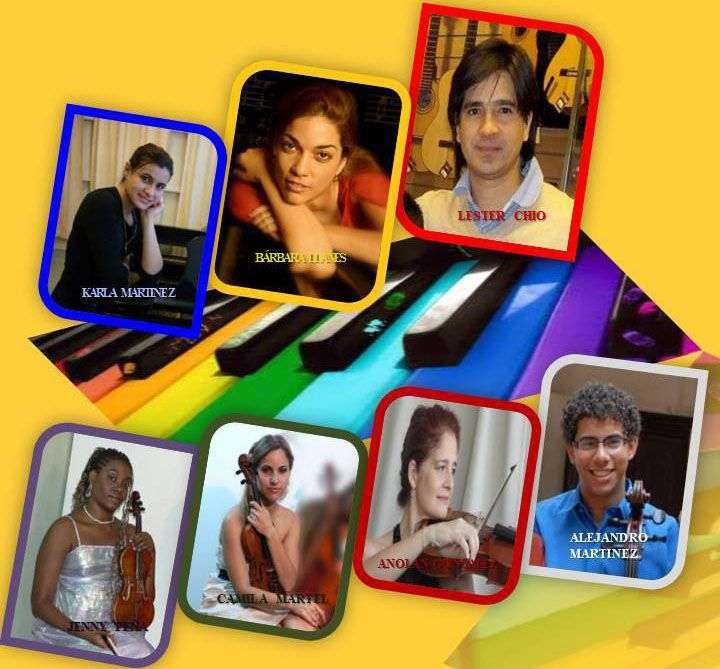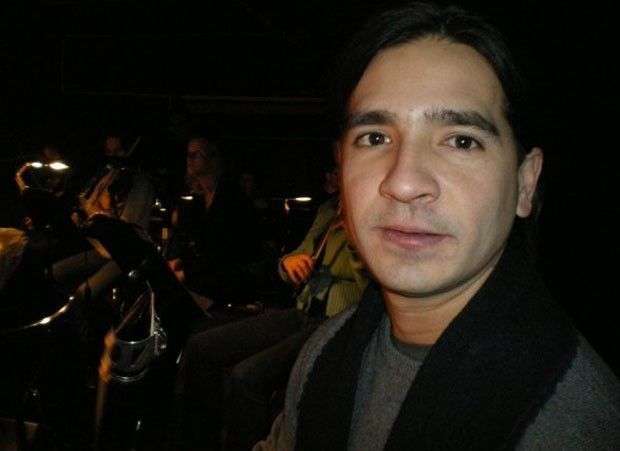Lester Chio is an internationally renowned Cuban clarinetist. Born in Havana, Cuba, he began his musical studies at the Guillermo Tomás Conservatory.
That’s he perfected the learning the instrument until, in 1995, when obtained the position of clarinetist in the Cali Symphony Orchestra. He also served as Professor of Clarinet at the Conservatory of Fine Arts Institute of Colombia.
In 2000 he had the good fortune to travel to France and take improvement studies in the Conservatory of Paris, under the guidance of master Richard Vieille, from the Department of orchestra and chamber music.
Currently he is working with orchestras such as Rouen Opera, Les Siècles, The ensemble Orchestral de Paris and the Orchestra of Brittany.
As clarinetist he has been part of the World Orchestra and the Orchestre Français des Jeunes, the Berlin Philharmonie, Concertgebouw d’Amsterdam, Leipzig Gewandhaus. Currently he serves as professor of clarinet at the Conservatory of St. ‘Cloud in France.
About five years ago he began promoting cultural exchanges between Cuba and France.
Solistas en Concierto para Música de Cámara is the latest initiative of Lester, who managed to bring together a group of Cuban talented performers to make various musical performances.
The first was in the Ermita de Monserrate, in Matanzas. Coming soon (July 29) they will visit the church of the village of Aguacate, Mayabeque Province. They will conclude with a large concert in the Minor Basilica of St. Francis of Assisi on Wednesday, July 31.
The protagonists of the special features are the talented cellist Alejandro Martinez, the pianist Karla Martinez, the violinist Jenny Peña and Camila Martel-both members of the Camerata Romeu, the outstanding violist Anolan Gonzalez and renowned soprano Barbara Llanes.
How was the idea for this project of cultural exchange between Cuba and France born?
I recall that in 2000 they had finished signing various cultural agreements between the two countries after relationships had been frozen for a long time.
That was favorable for this project that has existed for five years. The basic idea was to exchange experiences between the musicians of the highest level in France and their counterparts on the Island
From there came the idea of cultural events every year which give us so much as artists and also to the cultural relations between Cuba and France.
Another action saw the light almost to my arrival in the orchestra of the Opéra de Rouen, in Normandy, where I still work.
Year and a half ago we brought to Havana a part of the orchestra. We made several pedagogical concerts because we are very interested into these concerts to remain recorded in Cuban art education.
Cuba has many talents and interesting elements in terms of pedagogy. So we decided to create an association called Concertantes Colors Routes.
What brought you these years of study in France from the professional point of view?
When I arrived in France in 2000 I entered the Paris Conservatoire where, over time, I realized how in the case of the instrument that I had studied many existed unexplored musical possibilities for me.
Since the beginning of my studies in Cuba professors always instilled in me the cliche that the clarinet was a classical instrument. In France I’ve noticed that it can be used in completely different aesthetic.
The clarinet is widely used in jazz, modern music, in symphony orchestras, opera. It is also used by the musicians of the Eastern countries.
That has allowed me to expand a little on my vision and share the stage with musicians who have not graduated from the Paris Conservatoire Academy.
I was able to work with different chamber groups as the Paris Wind Ensemble and Sortie d’Artistes Ensemble, with whom I participated in festivals and toured several countries.
All this has enriched me as an artist. Now I want to share those experiences I lived in France with my Cuban friends and all those interested in alternative views of concert music.
What selection criteria did you have with the musicians and performers who participate in these concerts on the island?
I tried to bring together different generations of concert music soloists in Cuba that were integrated in a camera format designed for the occasion. All are a very talented group of friends.
How did you select the repertoire performed by musicians?
These works, mostly, little addressed in concert halls of the island I want the Cuban public to discover other types of repertoires and artists to interpret different kinds of music.
Of course I included Mozart, one of the most celebrated composers of chamber music, with a trio of impressive depth for viola, clarinet and piano.
Another author we interpret is Max Bruch, a German author of romance. Also make the list Nino Rota, Verdi, Connesson, and an overture on a Hebrew theme by Serguéi Prokofiev for string quartet, piano and clarinet.
As special guest we had soprano Barbara Llanes who plays Schubert’s Shepherd on the rock, a piece for voice, clarinet and piano. The concert program revolves around the romantic music and folk music.
What are your new projects?
I think we can never set apart the teaching, the arts, let alone politics. It is very important that institutions such as the embassies of Cuba and France, as well as the Basilica of San Francisco, support such initiatives.
All artists involved are carrying a very encouraging and effective message for future generations and for the general Cuban public.
Within a short time I hope to bring to Havana the entire Rouen Opera orchestra if things are a little better in Europe.
French musicians are keen to come to Cuba, playing here and appreciate what is happening on the island at the artistic level. It is something really admirable.

For: Maya Quiroga










